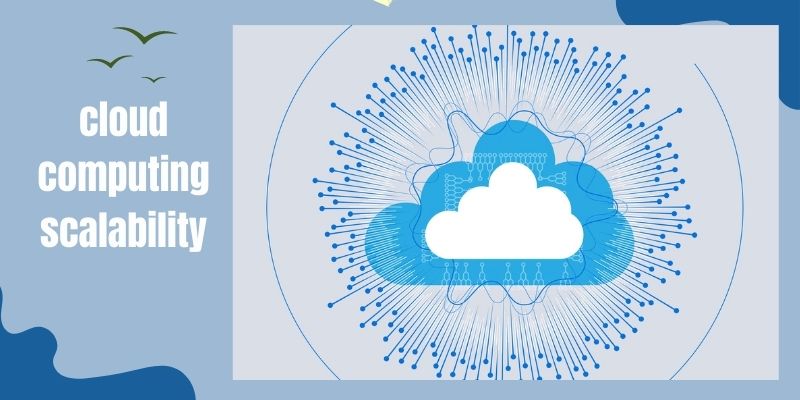What is scalability?

Cloud computing scalability
If any application or infrastructure piece can be expanded to meet a higher demand, a system is said to be scalable. Take into account the case where your web application is featured on a reputable website like ProductHunt. Can your infrastructure support thousands of users suddenly downloading your app? By scaling up as necessary, a scalable web application can accommodate the demand and avoid crashes. Users dislike websites that crash or load slowly, and your app’s reputation suffers as a result. The four general areas that systems’ scalability can be applied to are as follows:
- Disk I/O
- Memory
- Network I/O
- CPU
When talking about Cloud computing scalability, the terms horizontal scaling and vertical scaling are usually brought up. Let’s take a closer look at these concepts.
Vertical scaling
It is frequently believed that the vertical approach is the “easier” of the two. The power of an existing instance increases as a system is scaled vertically. More RAM, faster storage devices like Solid State Drives (SSDs), or more powerful CPUs could all be a result of this. Since servers on cloud systems like AWS are already virtualized, this is seen as the easier option because doing so is typically a simple process.
Horizontal scaling
Scaling horizontally is a little trickier. More servers are typically added while scaling horizontally so that the load is distributed among several machines. But your system becomes more sophisticated as a result of this. You now need to sync your program, data, and backups across numerous instances in addition to doing normal administration chores like upgrades, security, and monitoring.
Performance

Cloud computing scalability
Performance improvement is a major justification for system scalability. Scaling is related to several other ideas, like elasticity and fault tolerance, and is only one aspect of performance.
Response time
One of the most crucial metrics for evaluating the effectiveness of a system is response time. It’s interesting to observe that system scaling Cloud computing scalability cause response times to lag. If you switch from a type of system architecture where the database, application code, and caching are all on one server to a type of system architecture where these components are separated onto their own servers, the response time will inevitably increase because you now have to take into account network latency and other factors. Let’s look at the next two popular system architecture types.
Monolith
A monolith system architecture is based on the idea of centralizing many of your components. It could suggest that all of your services, including your data layer, cache layer, file layer, and business logic, are connected when referring to an application. Running your database, web server, and file system in a single location can be alluded to when talking about servers and hardware.
Microservices
A microservices system architecture is the division of important services into their own ecosystems. One of the most important parts of your application might be an image processing service that can edit, save, erase, cache, and store images. It would be possible for this service to stand alone from the other application services if it could develop its own infrastructure.
Scalability and databases
Finding crucial services that Cloud computing scalability become a bottleneck and the first to break down under increased load pressure is the goal. In this sense, each application is different. One of the most prevalent bottlenecks is the database. A database houses the data needed for an application.
Partitioning
Database sharding and partitioning are similar but not identical. Database partitioning separates data into distinct chunks. Some partitioning techniques are as follows:
- dividing data into ranges (either numerically or alphabetically)
- (Horizontal partitioning) Row-wise
- Vertical partitioning, column-wise
Application code database optimizations
Furthermore, you can improve databases at the application level by doing the following actions:
- database indexes are used
- dividing a table
- query caching in databases
- De-normalization
- executing bulk/large queries offline
Scalability benefits

Cloud computing scalability
Performance and the capacity to manage large loads or sudden spikes in traffic are the major advantages of scalable architecture. A scalable system can assist in maintaining your application or online business during peak times without causing you to lose money or harm your reputation. Monitoring, feature upgrades, debugging, and scaling a system that is divided into services, such as the microservices system architecture, can be made simpler.
conclusion
Businesses that use the cloud change with time. They are growing their business with the aid of the Cloud computing scalability. One of the fundamental ideas that aspiring Solutions Architects need to comprehend in order to be as effective as possible is scalability. It’s all done now! You have learned everything there is to know about scalability in this post, including how it impacts systems and applications, its advantages and disadvantages, how to optimize your database for scalability, and how scalability is used with Amazon Web Services.